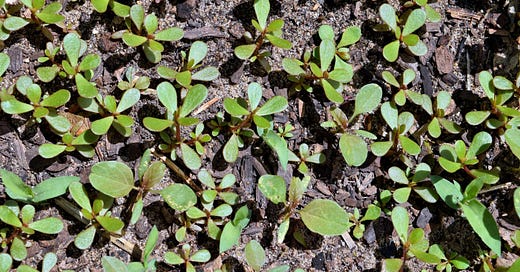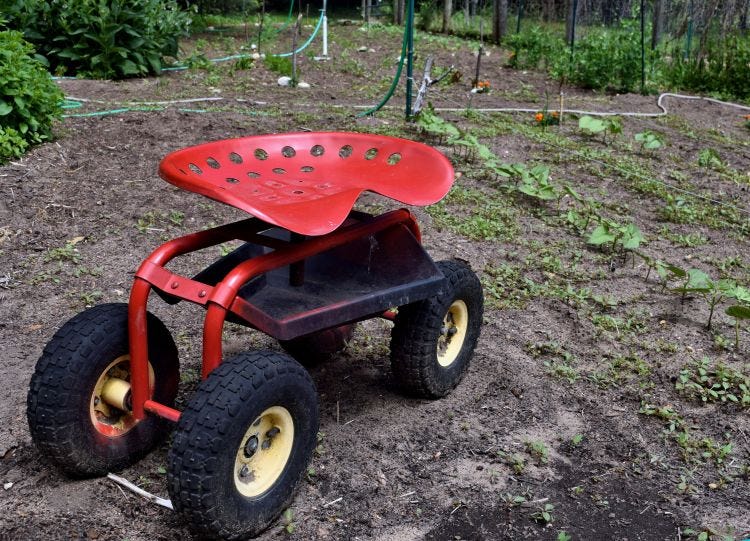Wild and growing in my garden, wild purslane (Portulaca oleracea) was a noxious weed and for years I pulled it and threw it in the woods. Every year it would come back, seemingly stronger and more prolific than ever. Then I learned that it was edible and packed with nutrition. It’s even considered a “super food” due to it’s high nutritional content. I had a whole new perspective on this “weed” now.
Funny I learned this a few years ago at a used bookstore when the owner realized I was interested in growing herbs. He showed me a pot of purslane he had growing out behind his shop on the back porch overlooking the river. He had transplanted some wild purslane growing in the cracks of the sidewalk from in front of his store and potted it up for future culinary uses. He told me he ate it in salads and made soups.
I have lots of wild purslane growing in my garden and this year I’m going to transplant some, grow it and eat it instead of throwing it away. I’ve got plenty to play with as you can see below. All that green in between the beans is all purslane, well 97% of it at least.
How do you like my little red tractor? Comes in real handy around picking time or trimming “suckers” on tomato plants. This time of year most of the work is to low to the ground for me to use my seat except to just “take 5”.
Nutrition
Wild purslane (Portulaca oleracea) – Contains vitamins A, B1, B2, B3, B6, C and E, as well as calcium, iron, copper, phosphorus, magnesium, manganese and potassium (See the appropriate nutritional table below)
(Nutritional Tables for raw purslane, cooked (boiled and drained) purslane with salt and cooked (boiled and drained) purslane without salt)
Vitamin E and beta carotene in wild purslane is six times higher than in spinach or carrots
Wild purslane has higher levels of potassium than many other vegetables, which helps to control blood sugar, improve metabolism and maintaining a healthy circulatory system
Highest level of omega 3 fatty acids than in any other green leafy vegetable
Growing Purslane as a Microgreen
The wild variety of purslane is the tastiest and most nutritious. Be careful about harvesting from unfamiliar locations where uses of pesticides and herbicide usage is unknown. Consider the growing conditions (livestock and other environmental wastes), etc. in the area that could contaminate the plants or it’s roots.





